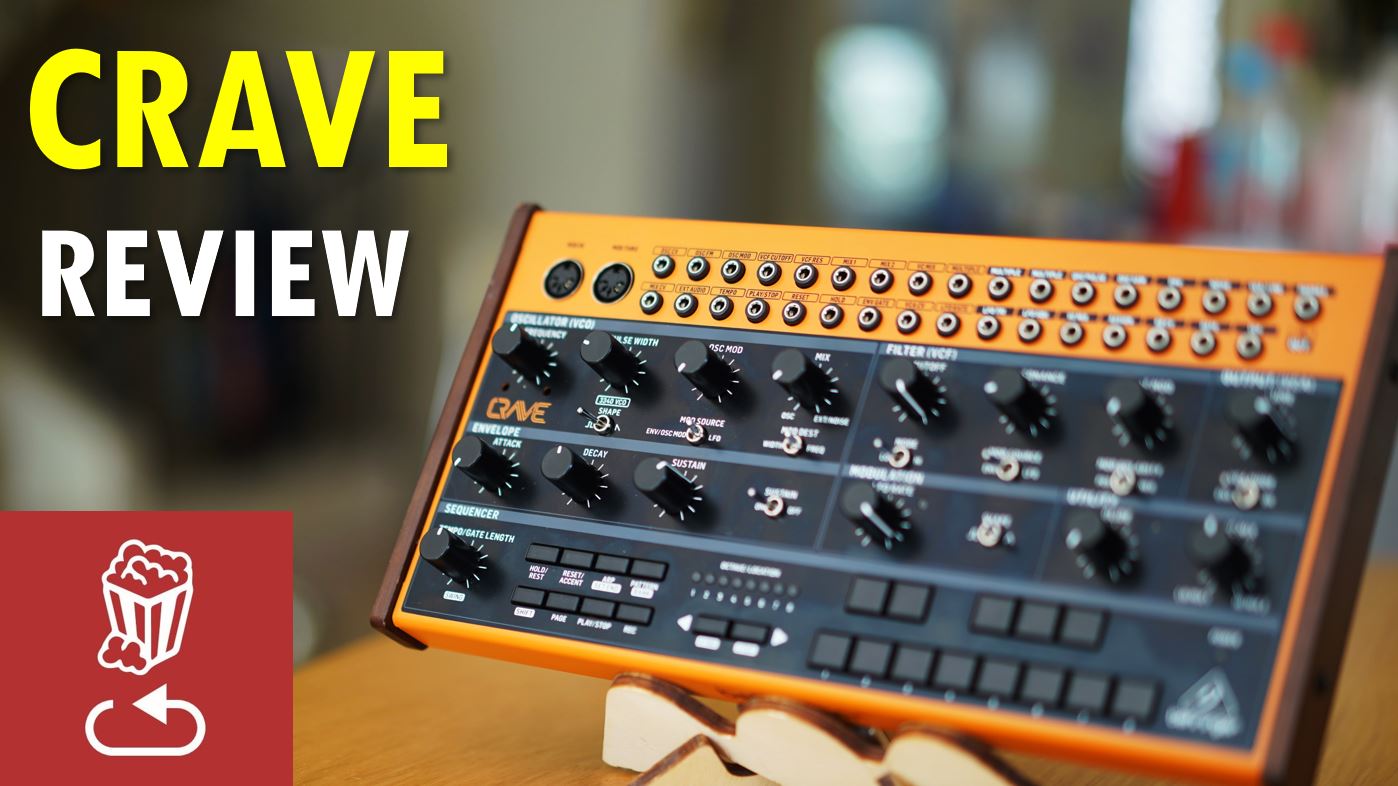Crave from Behringer is a semi-modular analog monosynth based their 3340 oscillator and ladder filter, with a single LFO and envelope, an arpeggiator/sequencer and a 32 jack eurorack compatible patch bay priced at around $200. The market for analog synths at this price is getting pretty heated up, so let’s check out how Crave compares – a full timeline is just under the video below:
0:00 Intro
0:45 Overview
2:30 Connectivity
4:00 Oscillator
6:00 Osc mods
7:05 Filter
8:45 Filter mods
10:45 Envelope
12:30 LFO
14:10 Utility
15:15 Arpeggiator
16:05 Sequencer
21:10 Global controls
22:00 Patch bay
22:20 Assign output
24:40 Patching ideas
25:35 Playing the filter
28:25 Feedback ideas
29:40 Playing the LFO
31:15 FM synthesis
32:25 Config software
32:45 Pros & cons

Your reviews are fantastic. Keep em coming. THANK YOU!
Thanks for the comment 😉
I just got my Crave a few days ago. The minimalist user Quick Start Guide booklet is a bit cryptic in actually using this synth, but your instructional video is spot on, I can literally watch and try the different steps as you are presenting them. Many thanks for an excellent video.
My pleasure!
Hey, amazing video.
Quick question, hope you can help me:
I’m sequencing my crave via usb from ableton and I want some sort of clock output that I can chain to a volca sample. Is there a way to assign the assign channel to a cv clock?
Yes if I remember correctly… please check the manual if/when it’s available
Hey Loopop, love your videos, great work.
Watching you coverage of the Behringer Crave, maybe I missed this, but does the Crave allow you to change Filter settings like Cutoff “per step?”
Thanks1
What’s cutoff per step?
Adjusting the filter’s cutoff or resonance settings so that each step of sequence has it’s own unique settings programmed or saved in.
Some sequencers can do this, some can’t. I have a little Roland JD-XI that can’t record unique filter settings per sequence step.
But here’s a clip of a guy making filter cutoff and resonance changes per step on a Dave Smith Pro-2. https://www.youtube.com/watch?v=vhifAMrZTZ8
oh got it – no, no per step cutoff control in the sequencer
Wrong video, sorry. Here’s a good example of per step filter changes. https://www.youtube.com/watch?v=jTmeeI-yg18
Thanks! I found it very useful and informative. Its easy to follow your explanation and not so speedy (sad enaogh a lot on youtube 🙁 )
I’ll give it a try.
Thanks! I’ll be checking out more of your videos, especially for Behringer products, with their QSGs only. I love that you put the index on the side the whole time; I’ll be using this video for reference as I work through each part. Keep up the great work (fun)!
Thanks!